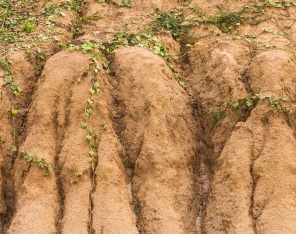
3 Ways To Control Dust On Your Project Worksite

Dust is one of those hazards that comes with the territory of construction work. When you are undertaking work activities to the likes of drilling, excavating, blasting, loading and tipping and even stockpiling, you are releasing dust particles into the air that are transported elsewhere. Dust decreases the visibility both in and around the worksite and also for traffic, contaminates surrounding environments and contributes to the deterioration of roads. Furthermore, dust poses a major health risk to workers who are breathing it in, so dust control measures and/or plans should be a high priority for any work site.
Dust control methods are used to control and suppress the dust particles from land surfaces. Here are three ways you can suppress dust on your projects worksite:
Vegetation and Mulch
The introduction of hydroseeding or hydromulching to provide vegetation and mulch to a worksite is beneficial to dust suppression. Mulches work to protect and cover exposed and loose soil from being picked up by wind. Being applied singularly, mulch works well, but with the addition of vegetation, it works much better. The root system of grasses work and join together in a “honeycomb” matrix to keep the soil held intact while the top of the grass covers and guards the soil from wind once it begins to germinate. After the initial watering of the area, maintenance is low as the mulch retains water for longer, meaning faster germination, but also reduced dust.
The plantation of trees and shrubs around the worksite can act as a windbreaker, slowing down the speed and strength of the wind and providing protection from the effect, reducing the amount of dust and preventing the displacement of soil particles that can lead to soil erosion.
Dust Suppressing Polymers
The use of non-toxic, environmentally friendly polymer based products excels in providing dust control solutions. The best type of dust control solution for your site depends upon a host of variables that are site-specific including environmental impact, water conservation and required length of suppression. The use of tough, polymer products has allowed for solutions to form a stable layer of bonded material, resistant to wind forces and erosion. Soil particles are physically and chemically bonded to improve strength and resist water. Polymers suppress over 95% of dust particles and keep soils in place, all while still supporting seed and vegetation growth if and when required.
The product is applied through a hydroseeder quickly and thoroughly, ensuring full coverage. The dust suppression solution quickly sets in a crust form, causing all fugitive dust to remain bound to the surface anywhere from 4 weeks up to 12 months. After the application period is complete, the non-toxic product slowly breaks down, eventually forming smaller and smaller pieces until it is essentially incorporated into the soil and microbes can further biodegrade it.
Tackifiers
Tackifiers are often used to create a bond in hydroseeding and hydromulching to stop seeds blowing away by effectively gluing the soil particles together, forming an erosion resistant crust. There are three types of tackifier bases; polymer, cementitious and organic. During a wetting event, polymer materials absorb the water, which allows the tackifier to return into its liquid solution state. Upon drying, the polymer hardens into a crust again, creating a new seal over the soil and/or aggregate, controlling the dust. Tackifiers can be used on their own to suppress dust or in conjunction with seeding. The effectiveness of tackifiers can be significantly affected by soil type. Heavy and / or well compacted soils may limit the ability of the tackifier to penetrate the soil and form a sufficiently thick surface crust.





